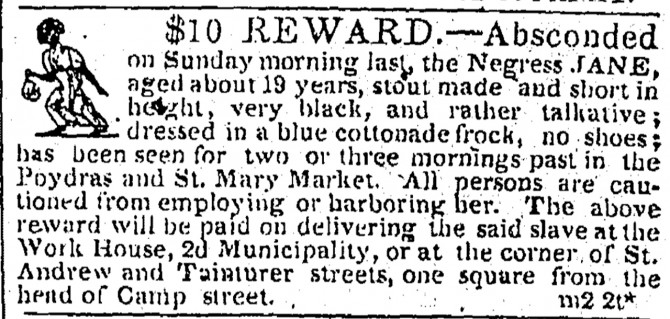Freedom on the Move builds database of fugitive slave ads
By Linda B. Glaser
Freedom on the Move (FOTM), an online project devoted to fugitives from slavery in North America, is enlisting the help of the public to create a database for tens of thousands of advertisements placed by enslavers who wanted to recapture self-liberating Africans and African-Americans.
The ads were placed in newspapers by enslavers trying to locate fugitives and by jailers wanting to return captured fugitives to the enslavers claiming them as “property.” The ads offered monetary rewards and included a wealth of personal details about the fugitives’ appearance, mannerisms, clothing, speech, family members, places of origin and destinations.
The insights the ads provide into the experiences of enslaved Africans and African-Americans are especially valuable because so little information about them as individuals has been preserved.
The free, open-source site has been designed to be accessible to the public. Users can quickly set up an account and begin working with digitized versions of the advertisements. Users transcribe the text of an advertisement and then answer questions about the ad and the person it describes. They can choose to transcribe ads from a particular state or specific time period, depending on their areas of interest.
The output of this crowdsourced project will be a growing database of thousands of individuals, and the places and people associated with them. This in turn will be an invaluable research aid, pedagogical tool and resource for genealogists, classes and individuals.
“This is a crucial set of sources about black people’s resistance to slavery, so we think it’s particularly appropriate to launch it during Black History Month,” said Ed Baptist, professor of history in the College of Arts and Sciences.
The FOTM team will work with high school and college classes, museums, libraries and historic sites to make this resource widely available. The database will also serve genealogists, for whom the lack of descriptive personal sources on enslaved people can be a problem.
Currently the site has approximately 12,000 newspaper advertisements available for crowdsourcing, with thousands more still to be added. The researchers aren’t sure how many of these advertisements exist in digital, paper or microfilm form, but they suspect the total may exceed 100,000. They hope to attract more scholars, archives and organizations who can contribute advertisements to the database.
Baptist and William Block, director of the Cornell Institute for Social and Economic Research (CISER), are the principal investigators for FOTM. The database is a joint project of the Department of History, CISER and Cornell University Library. Lead historians include Vanessa Holden of the University of Kentucky, Hasan Jeffries of Ohio State University, Mary Niall Mitchell of the University of New Orleans and Joshua Rothman of the University of Alabama.
The project has received major funding from the National Endowment for the Humanities and the National Archives.
Linda B. Glaser is a staff writer for the College of Arts and Sciences.
Media Contact
Get Cornell news delivered right to your inbox.
Subscribe

